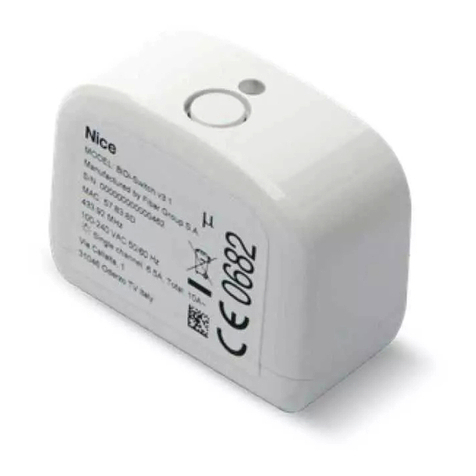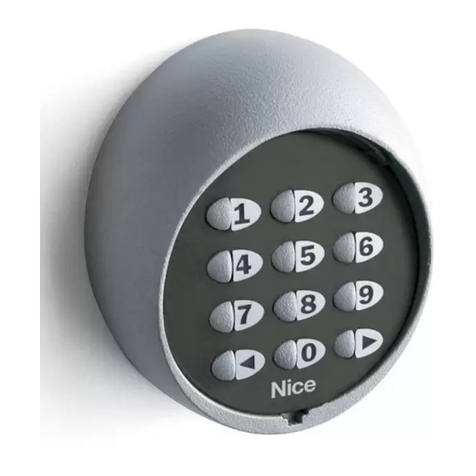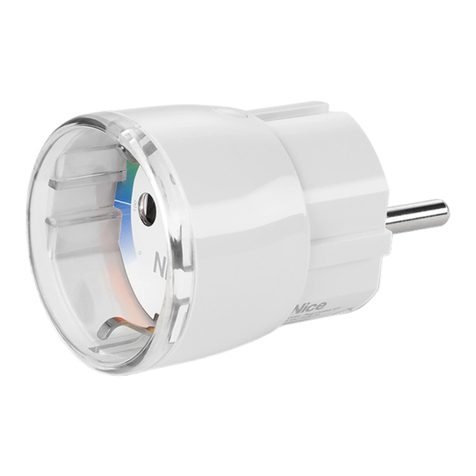English – 3
EN
The MOTB can be programmed in two ways:
EASY: easy programming: basic code entering and deleting functions.
PROFESSIONAL: professional programming: more specific functions.
The programming mode can only be selected when the internal memory is still
empty. The selected method can only be modified by deleting the entire mem-
ory (see chapter 5 - Further information).
4.1 - Using MOTB
Use of the keyboard is based on the combination of numbers with 1 to 9 char-
acters, which the user must compose by pressing the various keys present on
the keyboard. When a valid combination is entered, it is possible to activate a
command by pressing “” or “”; if however the combination is incorrect, the
keyboard will emit an acoustic signal. Important – If 3 incorrect combinations
are entered consecutively, the system blocks for 1 minute. Therefore, if an error
is made when entering the combination, wait for 10 seconds and then enter the
correct combination.
When entering the combination, there are 10 seconds between on entry
and the next; if this time passes the combination must be entered from the
beginning.
As well as the numerical keys, the keyboard also has the “” and “” confirmation
keys that are associated to the two commands 1 and 2, which can be activated:
- The “” key is the confirmation key for the 1 command (factory-set as Step-
by-Step);
- The “” is the confirmation for the 2 command (factory-set as Partial open).
On the basis of how it is programmed, every combination can be used to acti-
vate just one command or both commands:
- 1 command: after the entry of the combination, it is only possible to press the
previously-programmed corresponding confirmation key.
Example: the combination “1234” is valid for the “
” key and not for “
”;
- 2 commands: after having entered the combination, it is possible to press
either of the two previously-programmed confirmation keys; in this way 2 differ-
ent commands can be sent.
PROGRAMMING
4
03. Drill the bottom of the keyboard in the parts prepared for fixing the screws
and passage of the cables;
04. Pass the electric cable through the hole and fix the base of the keyboard to
the wall using the screws and plugs supplied;
05. Connect the electric cable to the “Bluebus” clamp (fig. 2);
IMPORTANT – At this point, if several MOTB (n° 4 maximum) are present
in the plant, they must be addressed, by modifying the position of the
electric jumper; see Table 1. Attention! – The various MOTB must have
different addresses to each other and from the other control devices pre-
sent in the plant;
06. Apply electric power input to the control unit: the keyboard lighting flashes
red to indicate the type of memory present (see Table 3 - chapter 5) fol-
lowed by 5 flashes that indicate if the memory is empty;
07. Carry out addressing of the keyboard from the control unit, see respective
“Learning of the bluebus devices” instruction manual.
08. Then, program the keyboard as described in chapter 4;
09. After having performed programming and having checked that everything
functions correctly, installation can be concluded.
At the end of programming it is necessary to check correct functioning of the
MOTB; see chapter 5 - Inspection.
3.4 - Procedure for the removal of the internal BM memory
The internal memory can be removed and can be programmed with the Nice O-
Box or MOU programming units (see respective instruction manual).
To remove the memory from its seat, proceed as shown in fig. 4.
TABLE 1 - Addressing jumper
MOTB 1
MOTB 2
MOTB 3
MOTB 4































